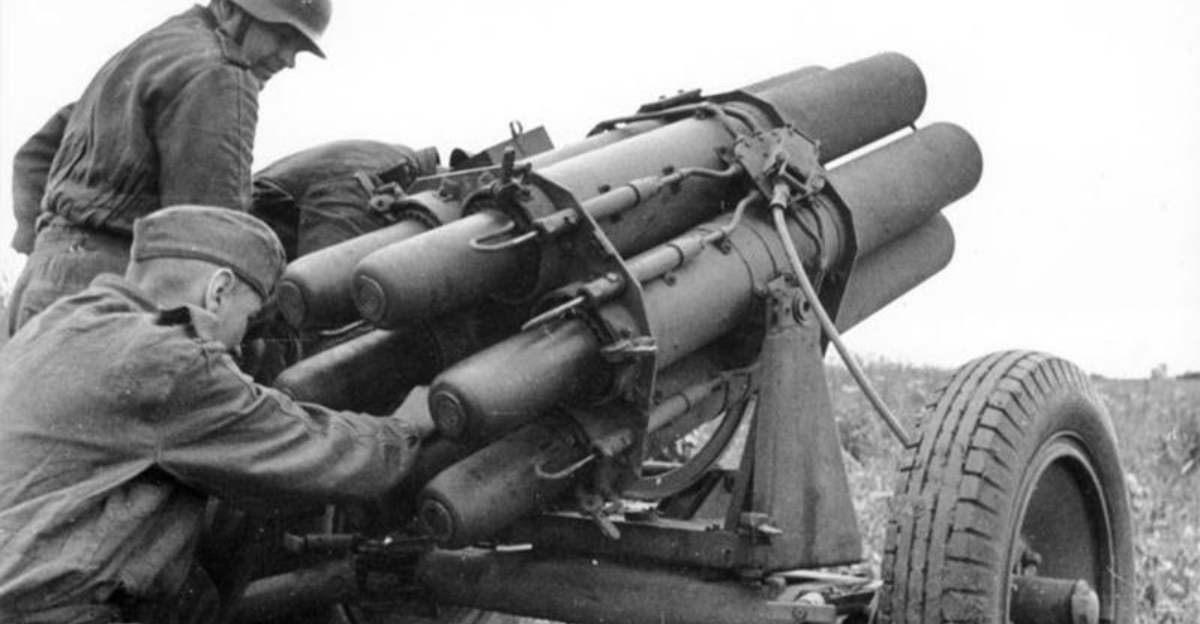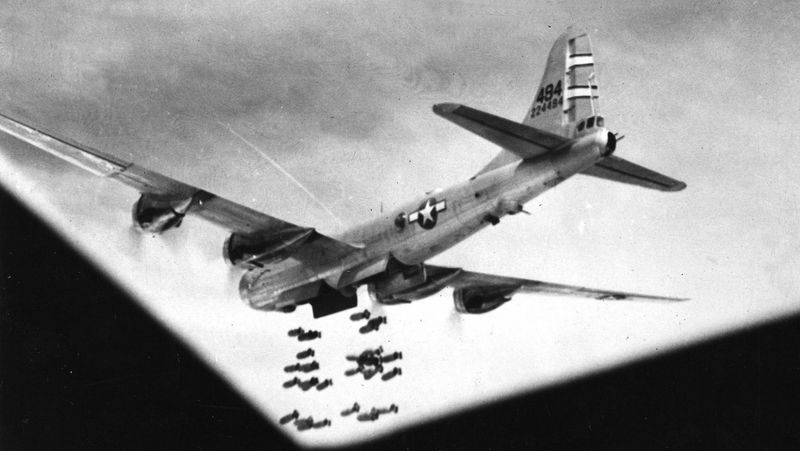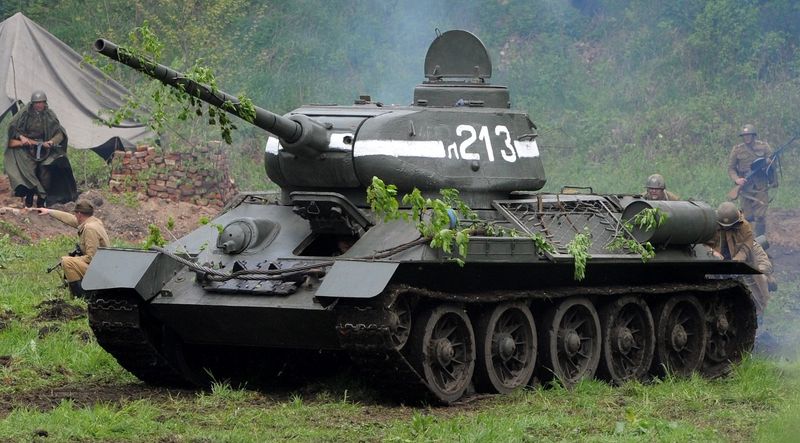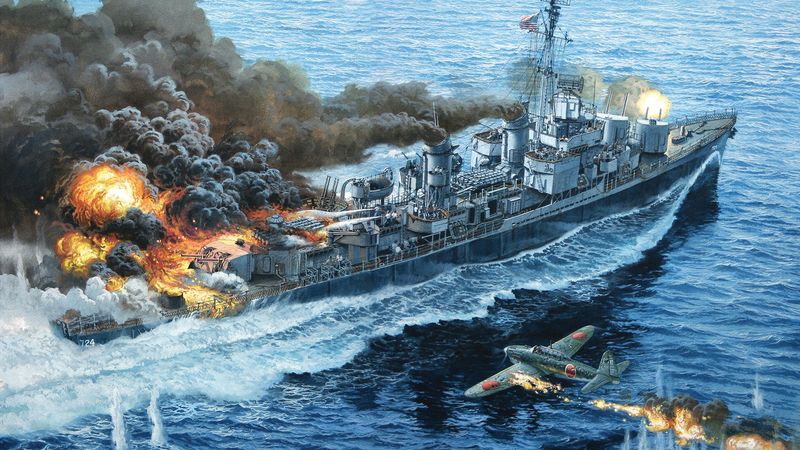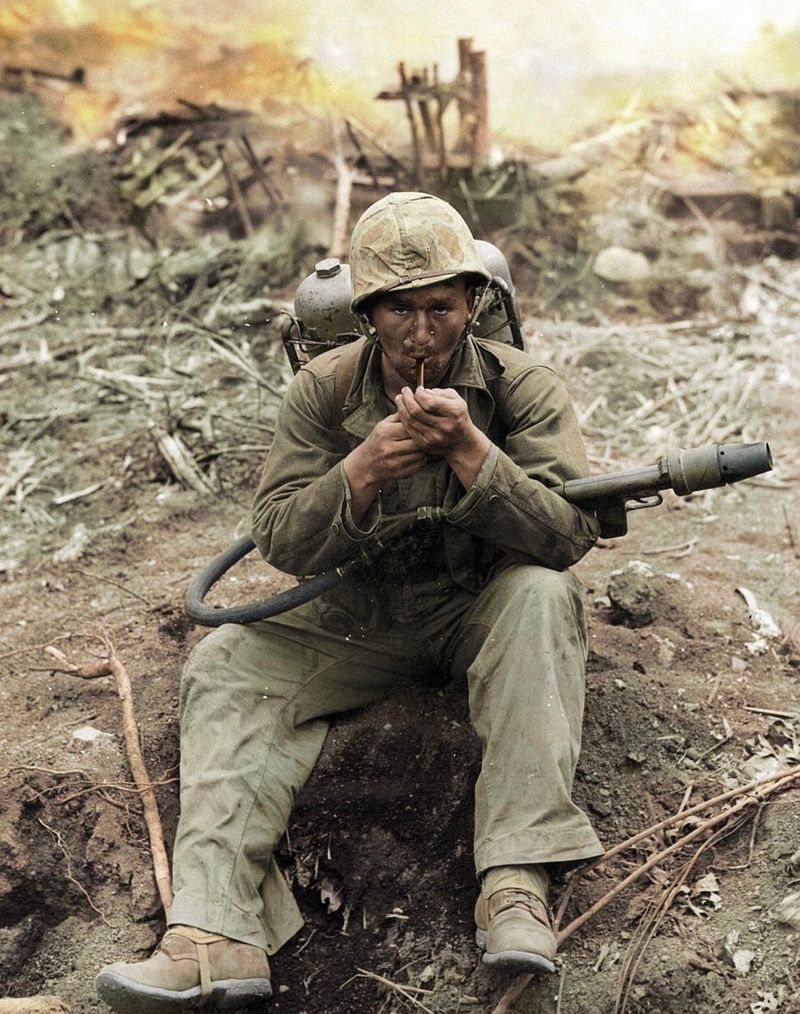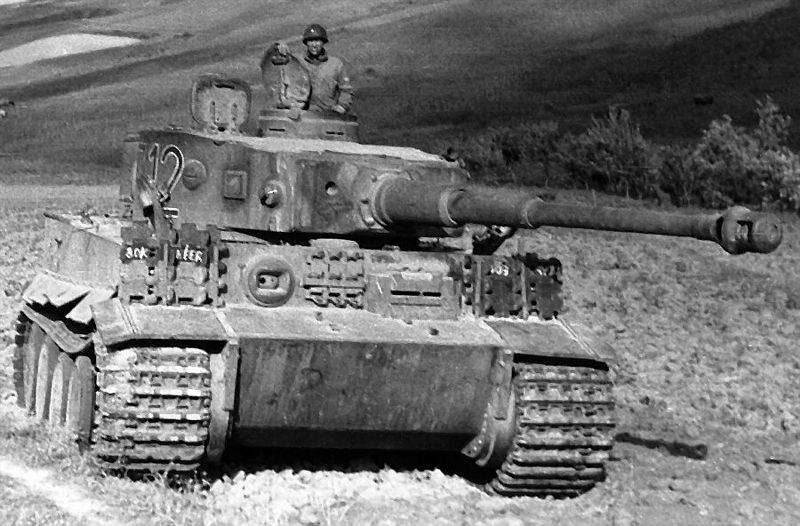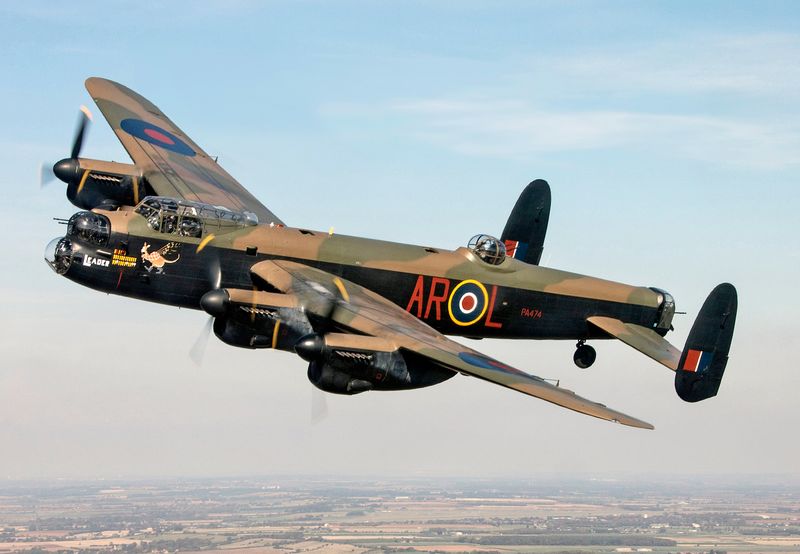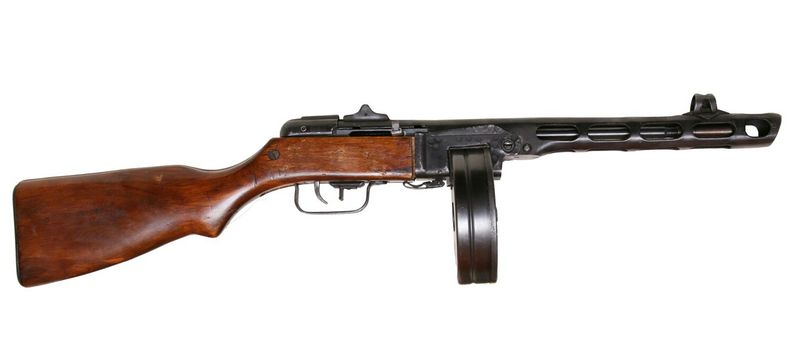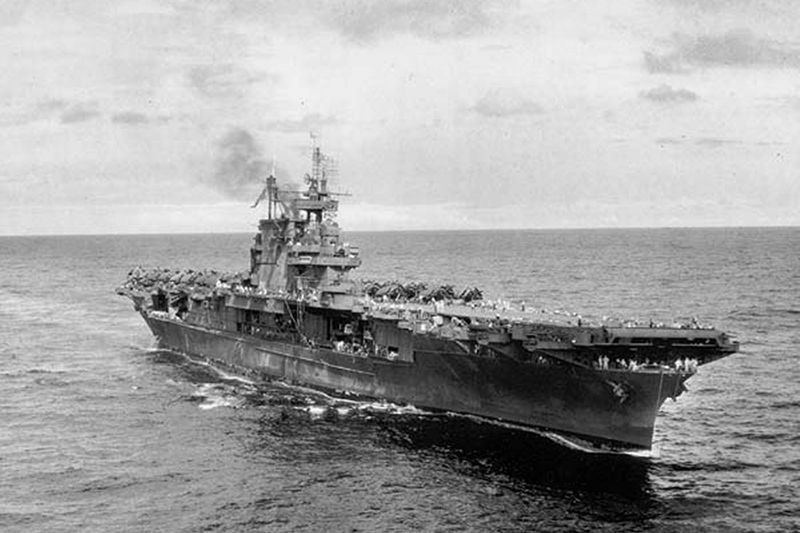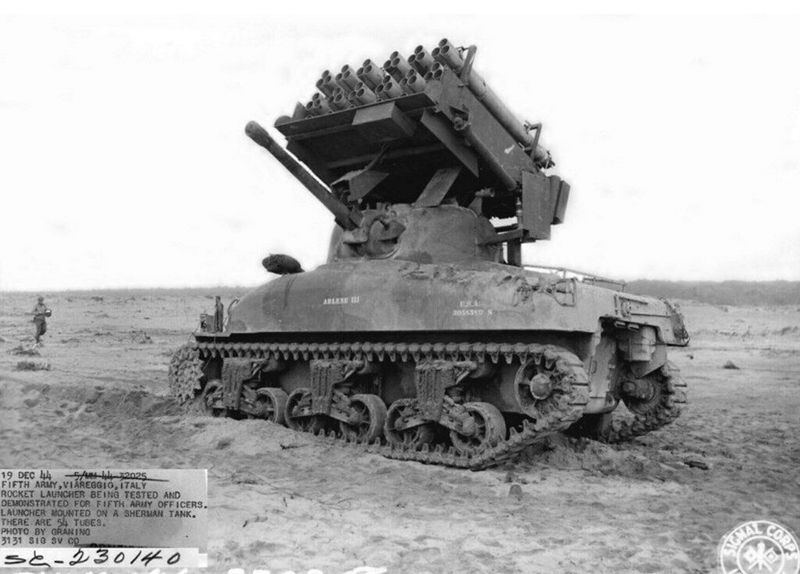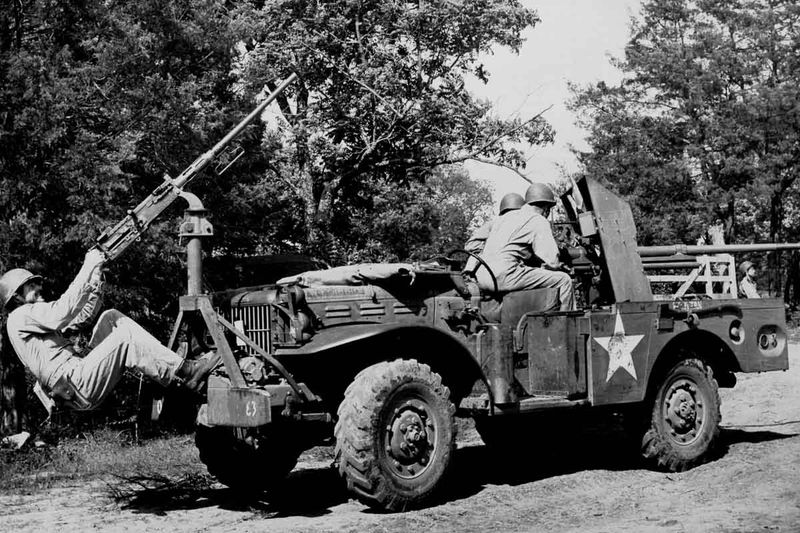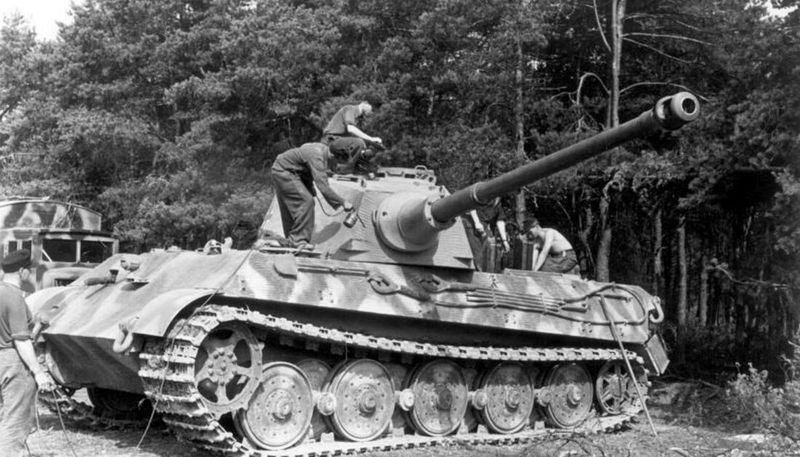World War II saw the development of weapons that forever changed warfare. From 1939 to 1945, military technology advanced at a frightening pace as nations desperately sought advantages over their enemies. These weapons caused unprecedented destruction and casualties, claiming millions of lives and reshaping the course of human history.
1. Atomic Bombs (Little Boy & Fat Man)
Nothing in human history compares to the devastating power unleashed over Japan in August 1945. These first nuclear weapons instantly vaporized thousands, while radiation poisoning claimed countless more lives in the following weeks and months.
The uranium-based ‘Little Boy’ destroyed Hiroshima with a 15-kiloton blast, while the plutonium ‘Fat Man’ devastated Nagasaki three days later. Their deployment remains the only wartime use of nuclear weapons.
Beyond the immediate destruction, these bombs introduced the world to atomic warfare, launching the nuclear age and forever changing international relations.
2. V-2 Rocket
Hitler’s vengeance weapon marked the dawn of modern missile technology. Traveling at supersonic speeds and carrying a one-ton warhead, the V-2 was virtually impossible to intercept, striking without warning from the edge of space.
German engineers under Wernher von Braun created this terrifying weapon that could hit London from launch sites in occupied Netherlands. No air raid sirens, no defense – just sudden destruction from the sky.
Though it killed fewer people than conventional bombing, the V-2’s psychological impact was enormous, and its technology later formed the foundation of both American and Soviet space programs.
3. B-29 Superfortress
America’s aerial giant brought unprecedented devastation to Japanese cities. With pressurized cabins allowing high-altitude bombing runs beyond the reach of most anti-aircraft fire, the B-29 could deliver payloads with devastating accuracy.
General Curtis LeMay’s controversial firebombing campaign unleashed hell on Japanese urban centers. The March 1945 Tokyo raid alone killed more people than the immediate effects of either atomic bombing, with incendiary bombs creating firestorms that consumed oxygen and melted asphalt.
The B-29’s crowning deadly achievement came when the Enola Gay and Bockscar delivered the atomic bombs, cementing its place as history’s most lethal bomber.
4. T-34 Tank
Soviet ingenuity created what many military historians consider the war’s most influential weapon. The T-34’s sloped armor deflected German shells while its wide tracks mastered the notorious Russian mud that bogged down Nazi tanks.
German panzer crews were shocked when their shells bounced off these medium tanks during Operation Barbarossa. The T-34’s perfect balance of firepower, protection, mobility, and production simplicity made it the ideal weapon for the Eastern Front’s massive tank battles.
Factory workers churned out over 80,000 T-34s during the war, often continuing production even as battles raged around their facilities. This tank truly embodied Soviet determination to defeat Hitler at any cost.
5. MG42 Machine Gun
Allied soldiers called it ‘Hitler’s Buzzsaw’ for good reason. The MG42’s terrifying 1,200 rounds-per-minute firing rate produced a distinctive ripping sound that haunted veterans for decades after the war.
German engineers created this deadly masterpiece using stamped metal parts for cheap mass production. A single MG42 team could pin down entire companies of infantry, forcing soldiers to crawl through mud as bullets cracked just inches above their helmets.
The gun’s quick-change barrel system allowed continuous fire without overheating, while its simple design meant even battlefield damage couldn’t easily stop it. Modern military machine guns worldwide still copy its revolutionary features.
6. Kamikaze Attacks
Desperate tactics born from Japan’s fading fortunes transformed pilots into human missiles. Young airmen, often barely out of their teens, deliberately crashed explosive-laden aircraft into Allied ships, creating impacts no conventional bomb could match.
American sailors faced the terrifying sight of planes diving directly toward them, knowing a single hit could kill hundreds. The psychological impact proved as devastating as the physical destruction, with naval crews suffering severe combat stress from the constant threat.
Nearly 4,000 kamikaze pilots died in these attacks, sinking or damaging over 300 vessels. This weaponization of human life represented Japan’s cultural emphasis on sacrifice and reflected their increasingly desperate military situation.
7. Flamethrowers (M2 & Flammenwerfer 41)
Few weapons struck such primal fear as streams of liquid fire shooting 40 yards through the air. American Marines in the Pacific and German troops on the Eastern Front used these terror weapons to flush out enemies from bunkers and fortified positions where conventional weapons proved ineffective.
Victims suffered horrific deaths as napalm-like fuel mixture adhered to skin and continued burning. The psychological impact often exceeded the actual casualties, with many soldiers surrendering immediately when flamethrower teams approached.
Beyond killing enemy soldiers, flamethrowers cleared vegetation concealing snipers and destroyed supplies. Their use in civilian areas remains one of the war’s most controversial tactical decisions.
8. Katyusha Rocket Launcher
German soldiers trembled at the distinctive howling sound of these Soviet weapons. Mounted on sturdy truck chassis, batteries of Katyusha launchers could fire salvos of 16 rockets simultaneously, saturating target areas with explosions before enemy troops could seek cover.
Stalin’s ‘secret weapon’ first appeared during desperate defenses of Moscow in 1941. The psychological effect was devastating – the shrieking rockets announced imminent destruction across wide areas, creating panic among Wehrmacht troops accustomed to methodical artillery bombardments.
Soviet propaganda nicknamed them ‘Stalin’s Organ’ for their distinctive rail-like appearance. Their ability to deliver massive firepower then quickly relocate before counter-battery fire made them nearly impossible to neutralize.
9. M1 Garand
General Patton called it ‘the greatest battle implement ever devised.’ American GIs wielding the semi-automatic M1 Garand could fire eight rounds as fast as they could pull the trigger, overwhelming enemies armed with bolt-action rifles requiring manual operation between shots.
The distinctive ‘ping’ sound when the empty clip ejected became one of the war’s iconic battlefield noises. German and Japanese soldiers, forced to work their rifle bolts after each shot, found themselves outgunned by American infantry who could maintain continuous fire.
Springfield Armory produced over 5.4 million of these rifles during the war. The Garand’s reliability in mud, snow, and Pacific humidity made it the perfect infantry weapon for a global conflict.
10. Tiger I Tank
Allied tank crews faced nightmares when encountering this German behemoth. The Tiger’s 88mm gun could destroy any Allied tank from distances exceeding a mile, while its thick armor shrugged off most return fire.
Mechanical reliability problems and fuel consumption issues limited its effectiveness, but nothing matched the psychological impact of Tigers appearing on the battlefield. American Sherman crews knew they needed approximately five tanks to challenge a single Tiger – and even then, success wasn’t guaranteed.
Famous Tiger commanders like Michael Wittmann became legendary for destroying dozens of enemy tanks in single engagements. Though only 1,347 were built, these tanks created fear disproportionate to their numbers.
11. Avro Lancaster Bomber
Britain’s aerial workhorse carried destruction to the German heartland night after night. With a massive bomb bay capable of holding the 22,000-pound ‘Grand Slam’ earthquake bomb, the Lancaster delivered more tonnage than any other Allied bomber.
RAF crews braved deadly night fighter attacks and flak to reach targets deep in Nazi territory. The controversial firebombing of Dresden in February 1945 demonstrated the Lancaster’s devastating capability when deployed in large numbers.
Unique among heavy bombers, the Lancaster could carry specialized weapons like the bouncing ‘Dambuster’ bombs that breached German reservoirs. Despite dangerous casualty rates, Lancaster crews maintained morale through their war-long bombing campaign.
12. Type 99 Arisaka Rifle (with Grenade Launcher)
Japanese infantrymen wielded these powerful bolt-action rifles with fanatical determination across the Pacific. The distinctive chrysanthemum imperial seal on each receiver reminded soldiers they fought for their divine emperor.
What made the Type 99 particularly deadly was its built-in grenade launcher. Using special blank cartridges, Japanese soldiers could launch grenades at American positions from concealed jungle locations without revealing their positions.
The rifle’s long bayonet facilitated the banzai charges that terrified Allied troops. Even when ammunition ran out, Japanese soldiers used these weapons as spears in desperate last stands, fighting to the death rather than surrendering.
13. PPSh-41 Submachine Gun
Soviet factories churned out millions of these distinctive drum-fed submachine guns. Red Army soldiers called it ‘Papa-Sha’ – a reliable friend in the brutal close-quarters fighting that characterized the Eastern Front.
The weapon’s 71-round drum magazine delivered devastating firepower in urban combat. German troops often discarded their own weapons to use captured PPSh-41s, particularly appreciating its reliability in harsh Russian winter conditions where other firearms froze.
Simple design allowed mass production even by factories staffed primarily by women and children as men fought at the front. The distinctive sound of its 1,000 rounds-per-minute cyclic rate announced Soviet advances across Eastern Europe as they pushed toward Berlin.
14. USS Enterprise (CV-6)
America’s most decorated warship brought death from above across the Pacific. This Essex-class aircraft carrier launched devastating air strikes against Japanese forces from Midway to Okinawa, earning an unprecedented 20 battle stars.
When Japanese radio announced ‘Enterprise sunk’ after multiple battles, American sailors joked ‘the Big E’ was too tough to kill. Her aircraft sank or damaged over 800,000 tons of enemy shipping and destroyed over 900 enemy aircraft.
After surviving multiple bomb and kamikaze hits that would have sunk lesser vessels, Enterprise earned her nickname ‘The Grey Ghost.’ Her presence at nearly every major Pacific naval battle made her Japan’s most feared American warship.
15. Nebelwerfer Rocket Artillery
Allied soldiers called them ‘Screaming Minnies’ for the terrifying shriek produced by their rockets in flight. These German multiple rocket launchers initially designed as smoke weapons became feared instruments of death on all fronts.
Six-barreled models fired 150mm high-explosive rockets that created widespread devastation across target areas. The psychological effect often exceeded physical damage – the distinctive howling noise caused panic among troops even before impacts.
German rocket battalions could quickly set up, fire devastating salvos, then relocate before counter-battery fire arrived. The weapon proved particularly effective against Soviet human wave attacks and for breaking up Allied infantry concentrations before German counterattacks.
16. Sherman “Calliope” Rocket Tank
American ingenuity transformed the reliable Sherman tank into a mobile apocalypse. By mounting 60 rocket tubes above the turret, engineers created a weapon that could saturate German positions with explosives before conventional attacks.
The psychological impact proved devastating – German troops called it ‘Roosevelt’s Organ’ in fearful reference to the similar Soviet Katyusha. A single Calliope could deliver the equivalent firepower of an entire artillery battalion in just seconds.
Though inaccurate for precision targeting, these weapons excelled at area suppression and breaking enemy morale. The distinctive rocket frames made Calliopes priority targets for German gunners, who recognized their devastating potential against infantry and fortifications.
17. Stuka Dive Bomber (Ju 87)
Screaming from the sky with sirens wailing, these German dive bombers became symbols of Blitzkrieg terror. The distinctive ‘Jericho Trumpet’ sirens attached to their landing gear created psychological warfare as effective as their bombs.
Polish, French, and Soviet troops broke formation and fled at the mere sound of approaching Stukas. The aircraft’s near-vertical attack profile allowed precise bombing of targets like tanks, bunkers and bridges that conventional level bombers couldn’t hit reliably.
Later in the war, upgraded Stukas carried tank-busting cannons that could penetrate Allied armor from above. Though vulnerable to fighter attack, these aircraft excelled at close air support, serving as flying artillery for German ground forces.
18. Type 93 “Long Lance” Torpedo
American naval officers couldn’t believe reports about this Japanese super-weapon until they witnessed its devastating effects firsthand. Unlike Allied torpedoes using compressed air, the Type 93 used pure oxygen, creating virtually no wake while delivering a massive 1,080-pound warhead at ranges exceeding 20 miles.
The torpedoes struck without warning, often from distances American commanders thought impossible. Their speed – nearly 50 knots – gave targeted ships little time to evade even if spotted.
These weapons proved decisive in several major naval battles, particularly night engagements near Guadalcanal. The Long Lance remained technologically superior to any Allied torpedo throughout the entire Pacific War.
19. Browning M2 .50 Cal Machine Gun
American forces deployed this versatile heavy machine gun on everything from infantry mounts to aircraft and naval vessels. The M2’s half-inch projectiles could penetrate light armor, destroy vehicles, and literally tear enemy soldiers apart.
Aircraft-mounted versions created the deadly firepower that made American fighters like the P-51 Mustang so lethal. On Pacific islands, the M2 proved particularly effective against Japanese banzai charges, creating devastating walls of fire.
The weapon’s reliability became legendary – many M2s fired tens of thousands of rounds without malfunction in extreme conditions from Arctic cold to Pacific humidity. Its design proved so successful that modernized versions remain in frontline service with military forces worldwide today.
20. Fritz X Guided Bomb
German engineers created the world’s first precision-guided weapon, revolutionizing aerial warfare. Radio-controlled by an operator in the launching aircraft, these 3,000-pound bombs could be steered directly onto moving targets like ships – something previously thought impossible.
The weapon demonstrated its deadly potential when it sank the Italian battleship Roma in 1943 as Italy surrendered to Allied forces. A single Fritz X could accomplish what might otherwise require hundreds of conventional bombs.
Allied ships developed electronic countermeasures to jam the bomb’s control signals, beginning the electronic warfare cat-and-mouse game that continues today. The Fritz X represented warfare’s technological future, where precision would eventually replace mass bombing.
21. Tiger II (King Tiger) Tank
Germany’s engineering marvel combined nearly impenetrable armor with a gun that could destroy any Allied tank from extreme ranges. Weighing a massive 68 tons, the Tiger II represented the pinnacle of German tank design – and their most terrifying ground weapon.
Allied tankers who encountered these beasts rarely survived to tell the tale. The 88mm KwK 43 gun could penetrate 150mm of armor at ranges exceeding 2 kilometers, while the tank’s own sloped armor proved nearly impervious to standard Allied tank rounds.
Fortunately for Allied forces, only 489 were built due to Germany’s collapsing industrial capacity. Fuel shortages and mechanical problems further limited their impact, though they remained feared until the war’s end.
